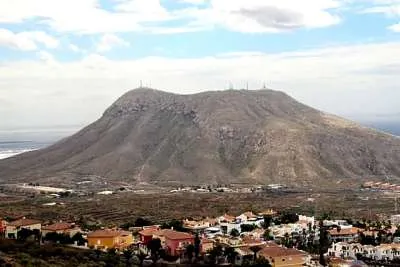3.8 magnitude earthquake rattles buildings in the Canary Islands
- 11-09-2024
- News Alert
- INVOLCAN / IGN
- Photo Credit: IGN
A 3.8-magnitude earthquake was registered off the north coast of Gran Canaria yesterday evening, Tuesday, near the municipality of Santa María de Guía.
according to the National Geographic Institute (IGN), it occurred at 7:20pm at a depth of 20 kilometres and was felt across much of northern Gran Canaria, registering an intensity of IV on the European Macroseismic Scale.
This intensity level means that the earthquake was felt indoors and outdoors, and people reported that they were shaken by the vibrations, which were described as moderate.
The tremor caused light rattling of dishes, glassware, windows, and doors while hanging objects swayed slightly. In a few cases, light furniture may have visibly shaken, and there were reports of minor creaking in building structures.
Although no significant incidents or damage to buildings have been reported, the emergency services line, 1-1-2 Canarias, received numerous calls following the quake. Local authorities continue to monitor the situation closely.
Why is the depth of an earthquake important?
While magnitude, often measured on the Richter or moment magnitude scale, is commonly understood as the primary indicator of an earthquake's potential damage, the depth at which an earthquake occurs is just as crucial. The depth of an earthquake, referred to as its focal depth or hypocentre depth, plays a significant role in determining the earthquake's effects on the surface.
What is Earthquake Depth?
An earthquake's depth is the distance between the Earth’s surface and the location within the Earth's crust where the seismic rupture begins. Seismologists classify earthquakes based on depth into three general categories:
1. Shallow earthquakes: Depths of 0–70 kilometres
2. Intermediate earthquakes: Depths of 70–300 kilometres
3. Deep earthquakes: Depths greater than 300 kilometres
The majority of earthquakes occur in the Earth's crust, which is generally 5 to 70 kilometres thick. Shallow earthquakes are the most frequent and often the most destructive, but intermediate and deep earthquakes, while less common, can still pose significant hazards.
Impact of Earthquake Depth on Surface Damage
The depth of an earthquake is critical in determining how much energy reaches the Earth's surface and the extent of the damage caused. Here’s how depth influences the effects of an earthquake:
1. Shallow Earthquakes: More Destructive Potential
Shallow earthquakes tend to cause the most damage. Because the earthquake originates close to the Earth's surface, seismic waves have a shorter distance to travel before reaching populated areas, and they lose less energy along the way. As a result, structures near the epicentre experience stronger shaking and are more likely to suffer significant damage.
Some of the most catastrophic earthquakes in history, such as the 2010 Haiti earthquake and the 1906 San Francisco earthquake, were shallow and caused widespread destruction.
Furthermore, shallow earthquakes can trigger secondary hazards such as landslides, tsunamis, and soil liquefaction. Since the ground near the surface is more susceptible to shaking, soft soils can behave like liquid, further amplifying damage to infrastructure.
2. Intermediate Depth Earthquakes: Wider Area but Less Severe
Intermediate-depth earthquakes are less destructive on the surface compared to shallow earthquakes because the seismic waves have to travel a greater distance through the Earth's crust, dissipating some of their energy before reaching the surface. However, the effects of intermediate-depth earthquakes can still be significant, particularly because their energy may spread over a wider area.
These quakes are often associated with subduction zones, where one tectonic plate slides beneath another. While they might not produce the intense localised shaking typical of shallow quakes, the broader area of impact can still lead to widespread, though somewhat milder, damage.
An example of this is the 1994 Northridge earthquake in California, which, despite being of intermediate depth (18.2 kilometres), caused significant damage across a large area.
3. Deep Earthquakes: Less Impact on the Surface
Deep earthquakes, occurring at depths greater than 300 kilometres, generally have the least impact on the surface. The energy released by these quakes gets absorbed by the surrounding Earth, and much of it dissipates before it can reach the surface. As a result, even high-magnitude deep earthquakes tend to cause less damage compared to their shallow counterparts.
While deep earthquakes are less likely to produce devastating effects, they still hold scientific importance. They provide insights into the deeper parts of the Earth, such as the mantle and the processes occurring in subduction zones.
A notable example is the 2013 Okhotsk Sea earthquake, which occurred at a depth of 609 kilometres with a magnitude of 8.3. Despite its immense depth, it was felt thousands of kilometres away, though it caused minimal damage due to the distance the seismic waves had to travel.
Why Earthquake Depth Matters for Preparedness and Mitigation
Understanding the depth of an earthquake helps scientists, engineers, and governments better prepare for and mitigate potential damage. Knowing the depth, along with the magnitude and location of a quake, enables accurate predictions about how much shaking will occur and which areas will be most affected.



























































